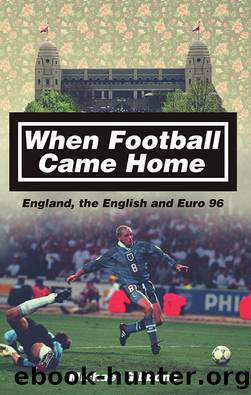When Football Came Home by Michael Gibbons

Author:Michael Gibbons
Language: eng
Format: epub
Publisher: Pitch Publishing
Published: 2016-09-15T00:00:00+00:00
11
That Nation Again
AT 9.20am on Saturday 15 June 1996 a white van drove on to Corporation Street in Manchester city centre. The vehicle was then parked and abandoned on double yellow lines outside a branch of Marks and Spencer, near the Arndale shopping centre. Within minutes it received a ticket from a traffic warden. At around 9.40am a coded warning telephoned through to Granada Studios on Quay Street made it clear that this was something more serious than a parking offence. The area, packed with tens of thousands of Saturday morning shoppers, was evacuated and experts arrived to try and remotely defuse the vanâs cargo. There would not be enough time to stop what was coming.
The estimated 3,300lb bomb, the biggest detonated in Great Britain during peacetime, exploded at 11.17am. A mushroom cloud plumed above Manchester, stretching 300 yards into the sky. âIf it [the area] had not been cleared there would have been many, many deaths,â said Assistant Chief Constable Colin Phillips. âIt is an absolute miracle no one was killed.â
There were 212 people injured as broken glass and debris showered down behind the evacuation cordon a quarter of a mile from the van. One womanâs face needed over 300 stitches, at which point the doctors stopped counting. Twelve buildings were severely damaged, several beyond repair. The cost of the damage was estimated at £700m. Five days later the Provisional IRA admitted to carrying out the attack. The actual perpetrators have never been found.
In London the Trooping of the Colour was taking place to celebrate the Queenâs official birthday. John Major left the event to lead the condemnation of the attack, which had arrived in the week of the Stormont peace talks in Northern Ireland. Overall the sense was one of relief. Life â outside Manchester at least â would go on as planned. In Burnham Beeches, Terry Venables prepared to take his team to Wembley to face Scotland.
The England versus Scotland fixture is the oldest in international football. In an effort to increase the popularity of the game north of the border a challenge match took place on St Andrewâs Day in 1872 between a select XI from the English FA and the Queenâs Park club in Glasgow, who would represent Scotland. Four thousand people paid a shilling to enter Hamilton Crescent in Partick, the home ground of the West of Scotland Cricket Club. They were witnesses to the first ever international football match. The game finished in a goalless draw.
The match became an annual event and started a rivalry marked by brilliance, controversy and rancour. In 1928 Scotland landed a blow on the jaw of England at Wembley, hammering their hosts 5-1. The team earned the nickname âThe Wembley Wizardsâ for a performance that passed straight into legend back home. England scored the biggest victory in the history of the fixture in 1961, winning 9-3 at Wembley. The Scottish goalkeeper Frank Haffey was later immortalised in the zinger, âWhatâs the time? Nearly ten past Haffey!â He never played for his country again, and the stereotype of hapless Scottish goalkeepers was born.
Download
This site does not store any files on its server. We only index and link to content provided by other sites. Please contact the content providers to delete copyright contents if any and email us, we'll remove relevant links or contents immediately.
Futebol by Alex Bellos(2301)
No Hunger In Paradise by Michael Calvin(1772)
Pep Confidential by Martí Perarnau(1734)
Cristiano Ronaldo: The Biography by Guillem Balague(1515)
Sir Matt Busby by Patrick Barclay(1494)
ALEX FERGUSON My Autobiography by Alex Ferguson(1490)
The Game of Our Lives by David Goldblatt(1480)
Cyrille Regis: My Story by Cyrille Regis(1464)
No Nonsense by Joey Barton(1444)
Football's Strangest Matches by Andrew Ward(1434)
Angels with Dirty Faces by Jonathan Wilson(1393)
The Lost Boys by Ed Hawkins(1380)
Red Card by Ken Bensinger(1348)
Soccer Men: Profiles of the Rogues, Geniuses, and Neurotics Who Dominate the World's Most Popular Sport by Simon Kuper(1247)
A Season With Verona by Tim Parks(1225)
Forward: A Memoir by Abby Wambach(1210)
We Are the Damned United by Phil Rostron(1199)
Scholes : My Story (9781471125799) by Scholes Paul(1196)
50 Complete Goalkeeping Training Sessions by Hageage Tamara Browder(1184)
